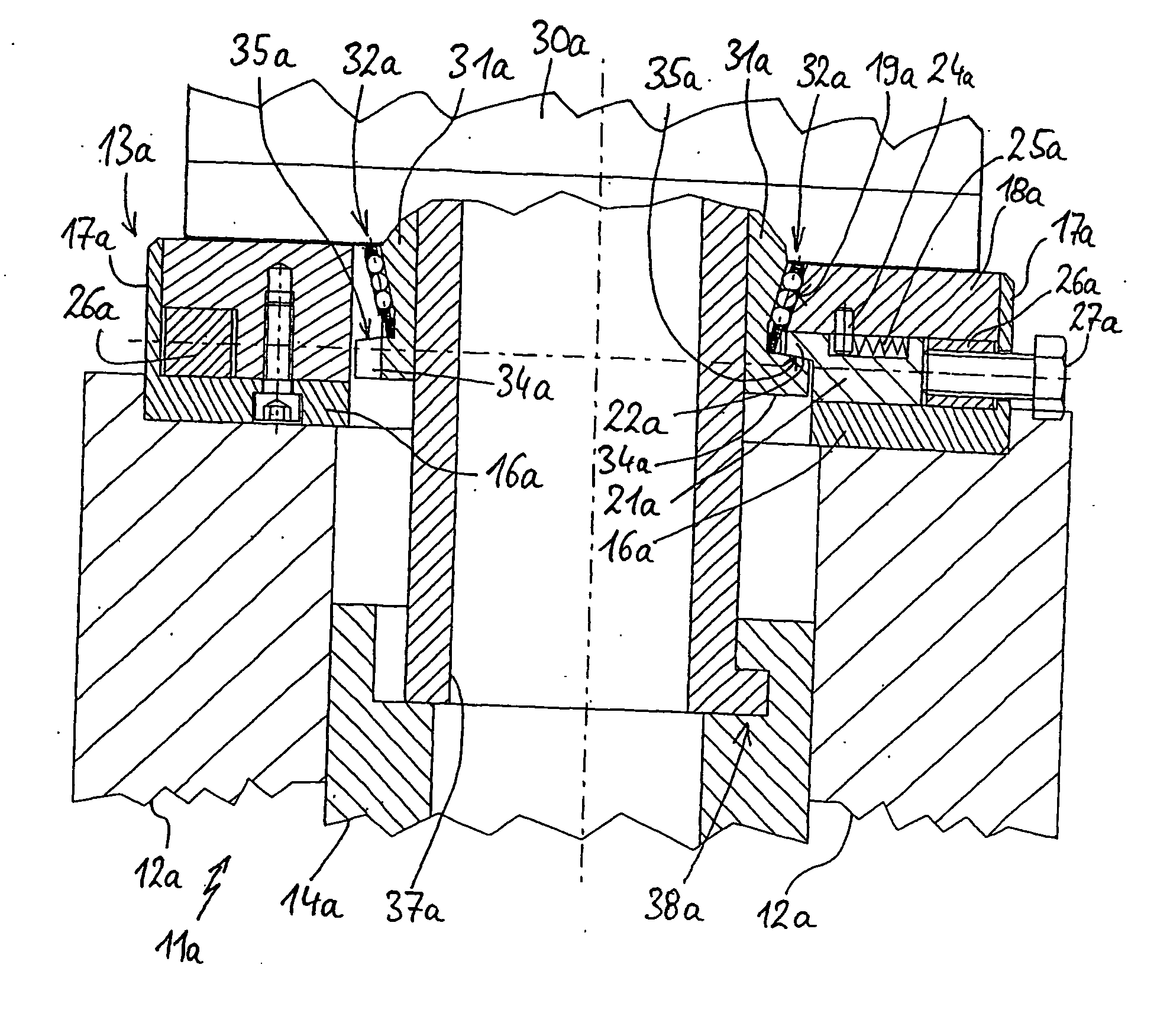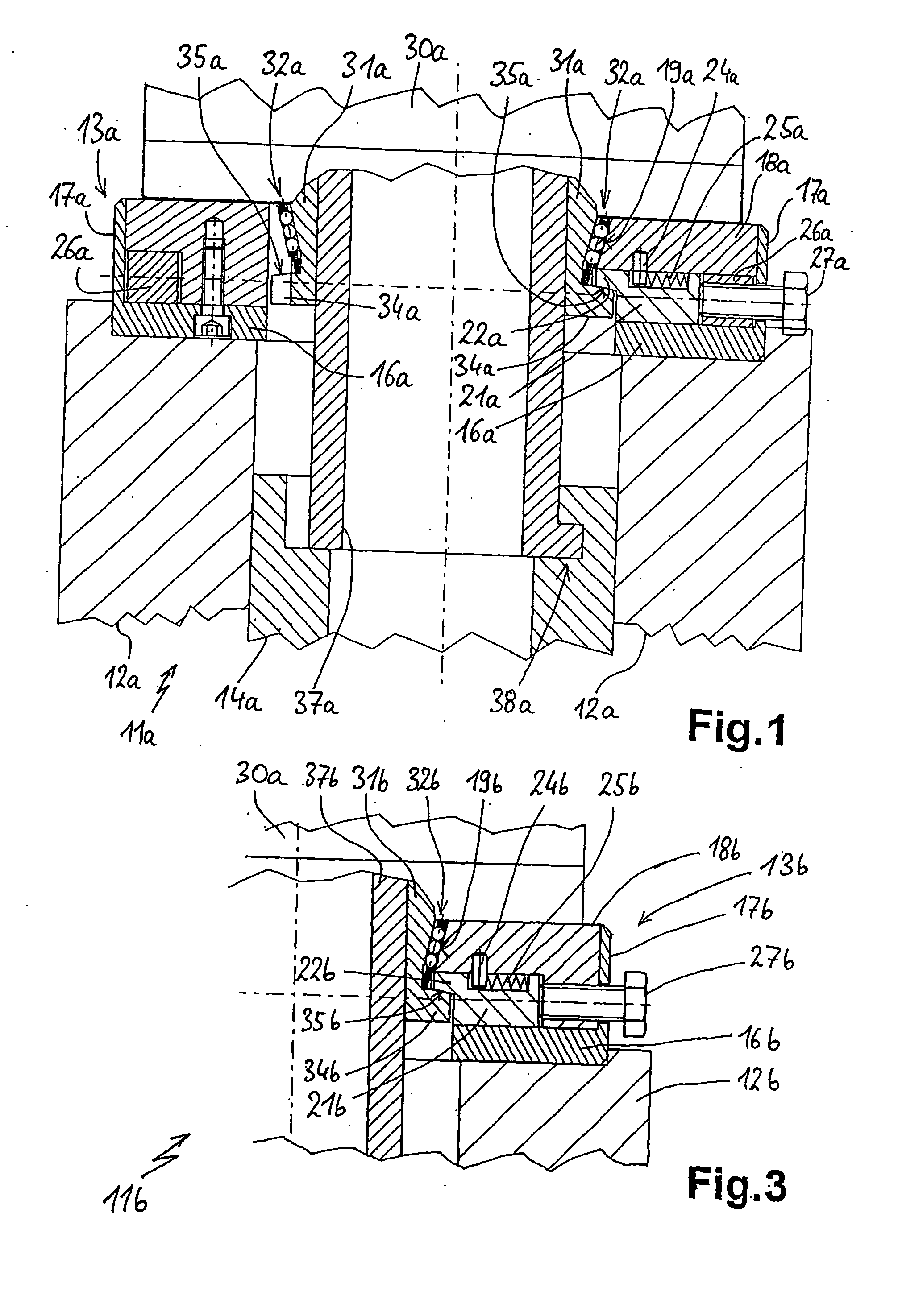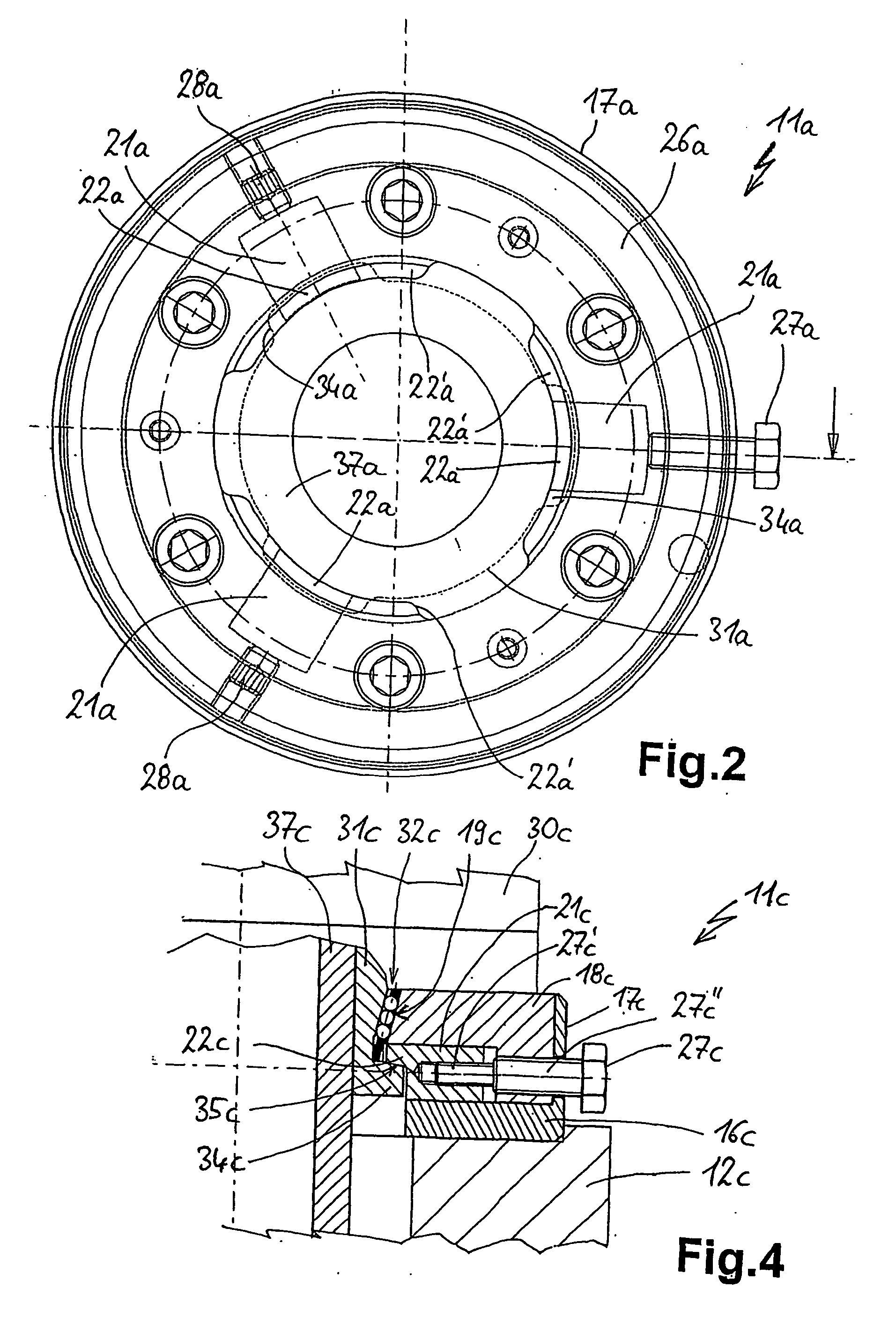Workpiece clamping system
a clamping system and workpiece technology, applied in the direction of turning apparatuses, metal-working holders, supporters, etc., can solve the problems of not being suitable for machine tools, unable to fix power-operated clamping systems to commercially available zero clamping systems, and limited retaining or draw-in force of individual zero clamping devices
- Summary
- Abstract
- Description
- Claims
- Application Information
AI Technical Summary
Benefits of technology
Problems solved by technology
Method used
Image
Examples
Embodiment Construction
[0031]FIGS. 1 and 2 show a conventionally constructed machine spindle 11a having a spindle body 12a to which is connected from the front an attachment area 13a. As is conventionally the case with machine spindles, a tension tube 14a runs in a longitudinal recess of machine spindle 11a in spindle body 12a.
[0032] To the machine spindle 11a is attached a chuck 30a, which is not shown here, but corresponds to a conventional chuck such as is e.g. described in DE 102 34 210 A. Chuck 30a has a central conical shoulder 31a, which engages in the attachment area 13a. Around the conical outer face on conical shoulder 31a runs a ball mat 32a, which is known from DE 102 34 210 A.
[0033] An area with radially protruding projections 34a is connected at the bottom to conical shoulder 31a. As can be gathered from FIG. 2, there are three projections 34a, which form part of the bayonet lock as yet to be described. The top of the projection 34a is slightly bevelled so as to form the inclined contact f...
PUM
 Login to View More
Login to View More Abstract
Description
Claims
Application Information
 Login to View More
Login to View More - R&D
- Intellectual Property
- Life Sciences
- Materials
- Tech Scout
- Unparalleled Data Quality
- Higher Quality Content
- 60% Fewer Hallucinations
Browse by: Latest US Patents, China's latest patents, Technical Efficacy Thesaurus, Application Domain, Technology Topic, Popular Technical Reports.
© 2025 PatSnap. All rights reserved.Legal|Privacy policy|Modern Slavery Act Transparency Statement|Sitemap|About US| Contact US: help@patsnap.com



